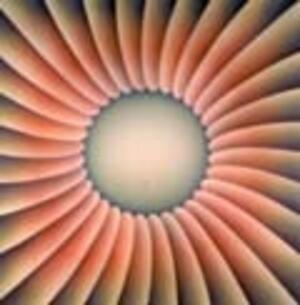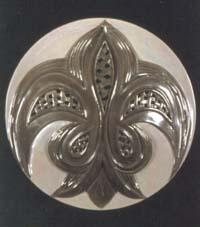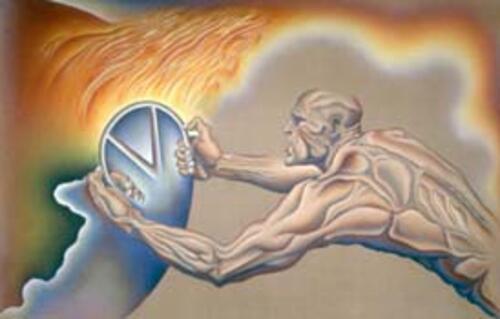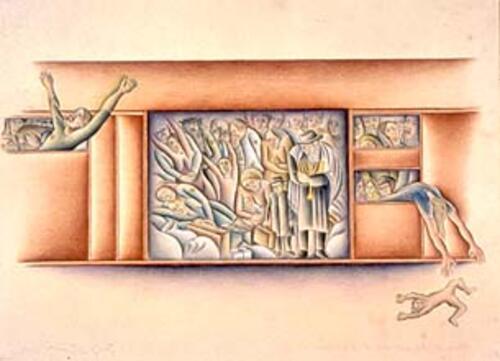Jewish Women Artists - Judy Chicago
Judy Chicago is an author, feminist, educator, and artist whose career now spans four decades. Throughout her career, Chicago has endeavored to give women control over "the recording of history, the dissemination of information, the transmitting of new values." A feminist art program that she founded in 1970 was designed to help women art students develop a positive sense of identity and to validate female experience as a source of artistic content. She is also the creator of one of the most influential installations of the late 20th century, The Dinner Party (1979). At a time when women artists had few role models and even fewer opportunities for recognition and success, Chicago looked to her foremothers for inspiration, and began to explore identity and other issues from a woman's perspective. To this day—as an artist, a feminist, and a populist—Chicago believes that each and every person is capable of changing the way others see, think and act in the real world.
Judy Chicago's recent projects have included Autobiography of a Year, a series of 140 drawings, and Resolutions, a project that includes work by sixteen artisans employing needlework and textile arts along with painting. Chicago has also written two autobiographies and published a number of books in conjunction with her art.
The Dinner Party: 1974-1979
Chicago turned her attention to the subject of women's history to create her best-known work, The Dinner Party, executed with the participation of hundreds of volunteers. She conceptualized the project as a reinterpretation of the Last Supper where "women would be the honored guests." Triangular in configuration, The Dinner Party is made up of an immense open table, covered with white cloths and set with 39 place settings, each of which commemorates an important historical woman. The whole installation rests on a porcelain surface called the Heritage Floor which is inscribed with the names of 999 additional women of historical significance.
Ultimately, The Dinner Party evolved into a monumental symbolic interpretation of the history of women in Western civilization, from Paleolithic to modern times. For the plate designs, Chicago developed symbols for each "guest" based on flowers, butterflies, vulvae, and historical motifs. In the needlework designs of the table cloths, she created a context for each plate through visual reference to the person's life and times. By combining a distinctly female image system with the techniques of women's cultural production and domestic labor, Chicago created work that both embodied and portrayed the powerful history of women's achievements. This monumental multimedia project has been seen by more than one million viewers, and has been displayed in fifteen exhibitions in six different countries. The Dinner Party is currently on exhibit at the Brooklyn Museum.
The Birth Project: 1980-1985
Responding to what she saw as the absence of iconic representations of birth in Western art, Chicago designed a monumental series of birth and creation images executed by needlework by skilled artists around the country. In place of the sexual symbolism Chicago had favored since 1973, she turned to more representational forms, often presenting childbirth from the birthing mother's vantage point. Chicago's shift to this more accessible style echoed a general trend in the art world that favored figurative art throughout the 1980's and 1990's.
The Powerplay Series: 1983-1968
.
In the Powerplay series Chicago concentrated on examining and reconstructing the concept of masculinity. In contrast to her celebration of women and creativity in The Dinner Party and her linkage of women, birth and creation in The Birth Project, in Powerplay Chicago explored the relationship between men, violence and destruction. In this series of drawings, paintings, bronze reliefs, weavings and cast paper she directed her critical feminist gaze to the gender construct of masculinity, exploring how prevailing definitions of power have affected the world in general—and men in particular.
The Holocaust Project: 1993
The Holocaust Project evolved from eight years of inquiry, travel, study, and artistic creation. It includes a series of images merging Chicago's painting with the photography of Donald Woodman, as well as works in stained glass and tapestry designed by Chicago and executed by skilled artisans. Chicago and Woodman saw the Holocaust as a point of entry into "the universal experience of victimization" that is part of a hierarchical system of power. The project emphasizes "the vulnerability of all human beings and, by extension, all species and our fragile planet as well," from the attempted destruction of European Jewry by the German industrial machine in the 1930's, to the continuing ills of child abuse, homophobia, genocide, slavery and environmental destruction.







